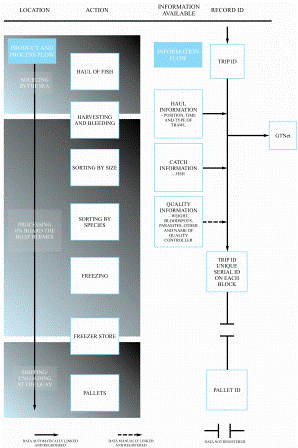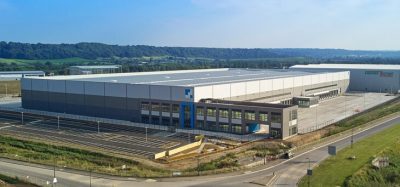The wider uses of traceability information
- Like
- Digg
- Del
- Tumblr
- VKontakte
- Buffer
- Love This
- Odnoklassniki
- Meneame
- Blogger
- Amazon
- Yahoo Mail
- Gmail
- AOL
- Newsvine
- HackerNews
- Evernote
- MySpace
- Mail.ru
- Viadeo
- Line
- Comments
- Yummly
- SMS
- Viber
- Telegram
- Subscribe
- Skype
- Facebook Messenger
- Kakao
- LiveJournal
- Yammer
- Edgar
- Fintel
- Mix
- Instapaper
- Copy Link
Posted: 4 July 2012 | Kathryn A-M Donnelly, Nofima – Norwegian Institute of Food, Fisheries and Aquaculture Research | No comments yet
Although traceability is often associated with food safety, increasingly the tools provided by a traceability system are being used for much more than food safety. The research carried out into traceability, initially spurred on by concerns over food safety, has expanded to include a wide range of different aspects of the modern food supply chain. These include internal logistics, supply chain logistics, food security, food authenticity, efficiency and sustainability monitoring.
For many countries, international trade in fisheries products is very important, and having an effective traceability system is often a required part of food safety systems. However, it must be remembered that simply being traceable does not equal food safety per se. Traceability is also increasingly important for reporting, moderating and refining sustainability strategies in the wild caught fisheries sector. Sustainability monitoring is of ever increasing importance and draws heavily upon traceability and other related and unrelated fields of science. The sustainability of food supplies for global usage in the fisheries supply chain is an area gaining focus.
The importance of this is reflected in the increasing research attention being paid to the area in national and international research initiatives.
Although traceability is often associated with food safety, increasingly the tools provided by a traceability system are being used for much more than food safety. The research carried out into traceability, initially spurred on by concerns over food safety, has expanded to include a wide range of different aspects of the modern food supply chain. These include internal logistics, supply chain logistics, food security, food authenticity, efficiency and sustainability monitoring. For many countries, international trade in fisheries products is very important, and having an effective traceability system is often a required part of food safety systems. However, it must be remembered that simply being traceable does not equal food safety per se. Traceability is also increasingly important for reporting, moderating and refining sustainability strategies in the wild caught fisheries sector. Sustainability monitoring is of ever increasing importance and draws heavily upon traceability and other related and unrelated fields of science. The sustainability of food supplies for global usage in the fisheries supply chain is an area gaining focus. The importance of this is reflected in the increasing research attention being paid to the area in national and international research initiatives.
Although traceability is often associated with food safety, increasingly the tools provided by a traceability system are being used for much more than food safety. The research carried out into traceability, initially spurred on by concerns over food safety, has expanded to include a wide range of different aspects of the modern food supply chain. These include internal logistics, supply chain logistics, food security, food authenticity, efficiency and sustainability monitoring.
For many countries, international trade in fisheries products is very important, and having an effective traceability system is often a required part of food safety systems. However, it must be remembered that simply being traceable does not equal food safety per se. Traceability is also increasingly important for reporting, moderating and refining sustainability strategies in the wild caught fisheries sector. Sustainability monitoring is of ever increasing importance and draws heavily upon traceability and other related and unrelated fields of science. The sustainability of food supplies for global usage in the fisheries supply chain is an area gaining focus.
The importance of this is reflected in the increasing research attention being paid to the area in national and international research initiatives. Several projects have been established recently relating to the environmental, social and economic impacts of fisheries in northern Europe, each using previously established or newly developed themes in traceability research and attempting to break through new frontiers in these areas of science.
The Norwegian Institute of Food, Fisheries and Aquaculture Research (Nofima) covers all food sectors and links in the value chain and plays a central role in various international seafood traceability and sustainability research activities.
One of the most exciting areas of research currently focuses on fisheries. This is because fisheries exemplify problems ranging from sustainability to customer preferences and all the problems in between.
Informing consumers
White fish is familiar to us as an important ingredient in everything from fish and chips to sushi. Within the European Union, much of the white fish comes from wild capture. The total worldwide annual catch of one species of white fish, Atlantic cod (G Morhua), is about 800 thousand tonnes. Over 90 per cent of the world supply of this species comes from sustainable stocks in the North-East Atlantic. Tilapia (O. niloticus) and pangasius (Pangasius hypophthalmus) from aquaculture in Asia and the Far East is a main competitor in the EU white fish market.
In order to communicate the differences between wild caught and farmed fish, the fisheries industry needs to capture and effectively communicate information related to catch area data and catch method. Current research has shown that consumers may be poorly informed about the fish they eat, for example not knowing if it is wild or farmed1. Information captured in a traceability system can be a tool for increasing market access and share. However, this information must be easily retrievable in order to create value.
Sustainability and environmental impact
Governments, Non-Governmental Organisations (NGOs) and consumers are increasingly aware of the sustainability aspects related to fish and fisheries and their environmental impact. Environmental impact is important for two reasons, one being the ability to use this information as a marketing tool and perhaps more importantly, to better advise and regulate fisheries in order to provide a sustainable food source for generations to come. These needs are reflected in the projects ‘Whitefish’ and ‘Research and development in the white fisheries sector in Norway’ (see boxes).
The Environmental Impact (EI) of a product can be used both by consumers to assess food and by regulators to promote fishing practises with the most desirable environmental impact. Environmental impact can take into con – sideration issues such as acidification, ozone depletion, eutrophication, use of non-renewable resources and many more factors. Life Cycle Assessment (LCA) takes all these and other factors into consideration when estimating impact. It is a technique designed to assess each and every impact associated with all the stages of a process, from raw materials through materials processing, manufacture, distribution, use, repair and maintenance anddisposal or recycling. With LCA, it is possible to calculate not only the impact on the environ – ment, but also the impact on sustainability in general, taking into consideration social and economic impact as well as environmental impact. Being able to calculate EI internally, frequently, cheaply and uniquely and not just a product type average would be a big step forward. Making use of the large quantities of data acquisition and calculation already recorded in traceability systems could form the basis.
Can you press a button and get this information?
The ability to capture information necessary for calculating environmental load or for presenting to customers buying a product is only currently in place in some parts of the fisheries food supply chain. In one study of the fisheries industry, the ability to capture the information was assessed and is described below.
At the start of each trawl for a haul of fish, the position, time and type of trawl is registered. This generates a ‘trip number’ which is then linked to all the fish in that haul. This ID enables the identification of boat, date, time, type of trawl and area of trawl i.e. traceability. Here it can be seen that at least part of the information about the fish can be related to each catch, but as Figure 2 shows not all the information is yet available at the push of a button. More importantly, there is currently no simple tool for calculating the environmental impact of each catch. You may well ask then why does this company bother carrying out all these registrations? The main motivations for trace – ability investment in CodTrawl were: a) market access b) better price and c) better control. CodTrawl has presented traceability as a success story, so workers were positively motivated.
The CodTrawl assessment shows that much information can be captured, recorded and reported. But what can be done with such information once we know it is there? It could well contribute to attempts to calculate the EI for individual boats which would be useful for marketing, though more information would be needed to assist the regime of an entire country to maintain sustainable fisheries.
Case studies in the Norwegian fisheries sector
It is important to study the environmental impact of a whole system, for example the entire fisheries industry within one country. Wild capture fisheries are based on harvesting a resource which is not constant. Catch patterns and the availability of this resource are constantly affected by numerous factors including the migration patterns for the fisheries in the area in question, the health and size of the population and not least the ability to harvest the resource due to weather conditions. These are the factors within the first, i.e. capture, part of the chain, but there are many other factors throughout the chain that affect what the consumer receive.
By examining for example fuel usage and quality throughout the chain and across the different sizes of boats conclusions can be drawn which can aid the industry in becoming more effective, have a more desirable environmental impact and provide the consumer with better quality products and more information.
Conclusion
Through projects such as those above, the full potential of traceability information can be exploited for logistic improvement, market access and improvement of market share and in order to better regulate the fisheries. These research actions will hopefully also ensure environmental sustainability i.e. food for generations to come, and the ability to harvest resources from the sea for profit and ensure jobs for fishermen in the future i.e. economic and social sustainability.
References
1. Altintzoglou, T., et al., Association of health involvement and attitudes towards eating fish on farmed and wild fish consumption in Belgium, Norway and Spain. Aquaculture International, 2010: p. 1-14
2. K.A., D. and O. P., Catch to landing traceability and the effects of implementation – A case study from the Norwegian white fish sector. Food Control, 2012. in press
About the author
Dr Kathryn Anne-Marie Donnelly holds degrees from University College London, University of London and the University of Tromsø in Norway, the latter being a degree in Marine Biology. She is currently working at the Norwegian Institute of Food, Fisheries and Aquaculture (Nofima) as a scientist in the area of food traceability.










